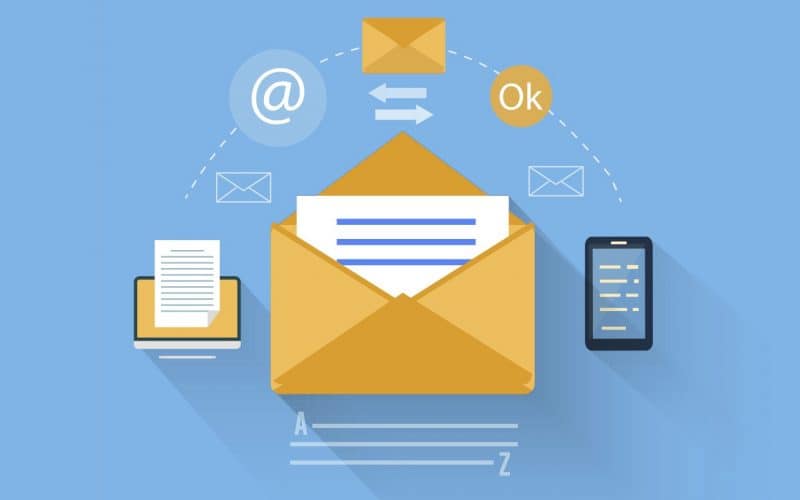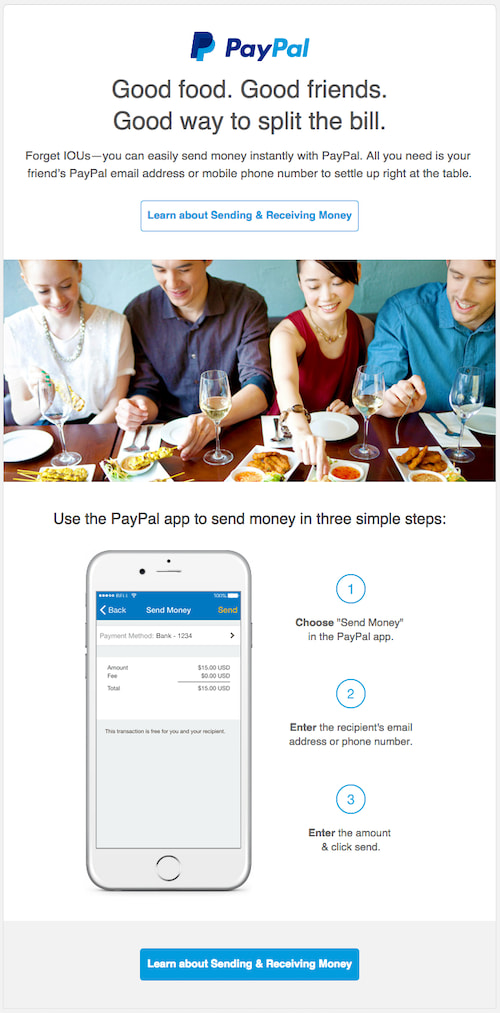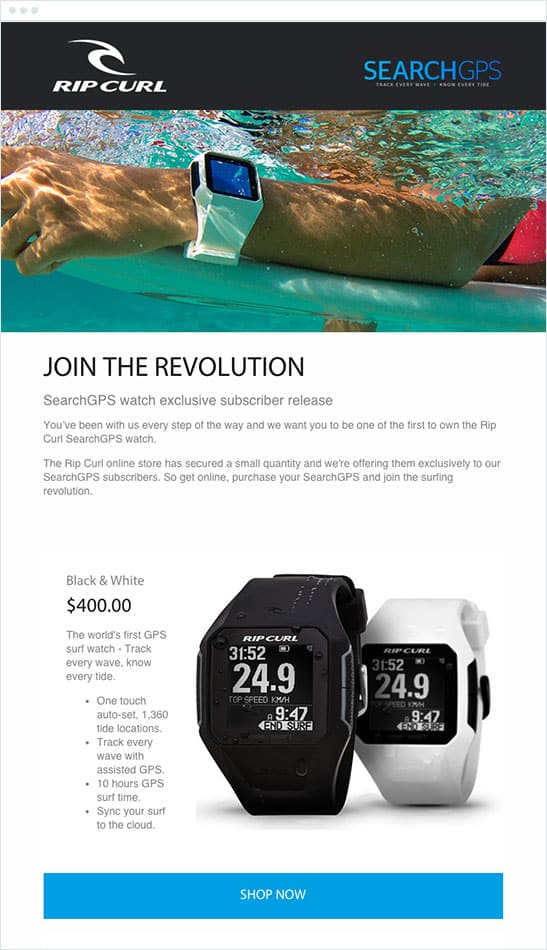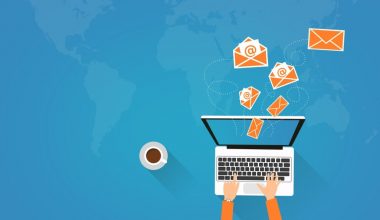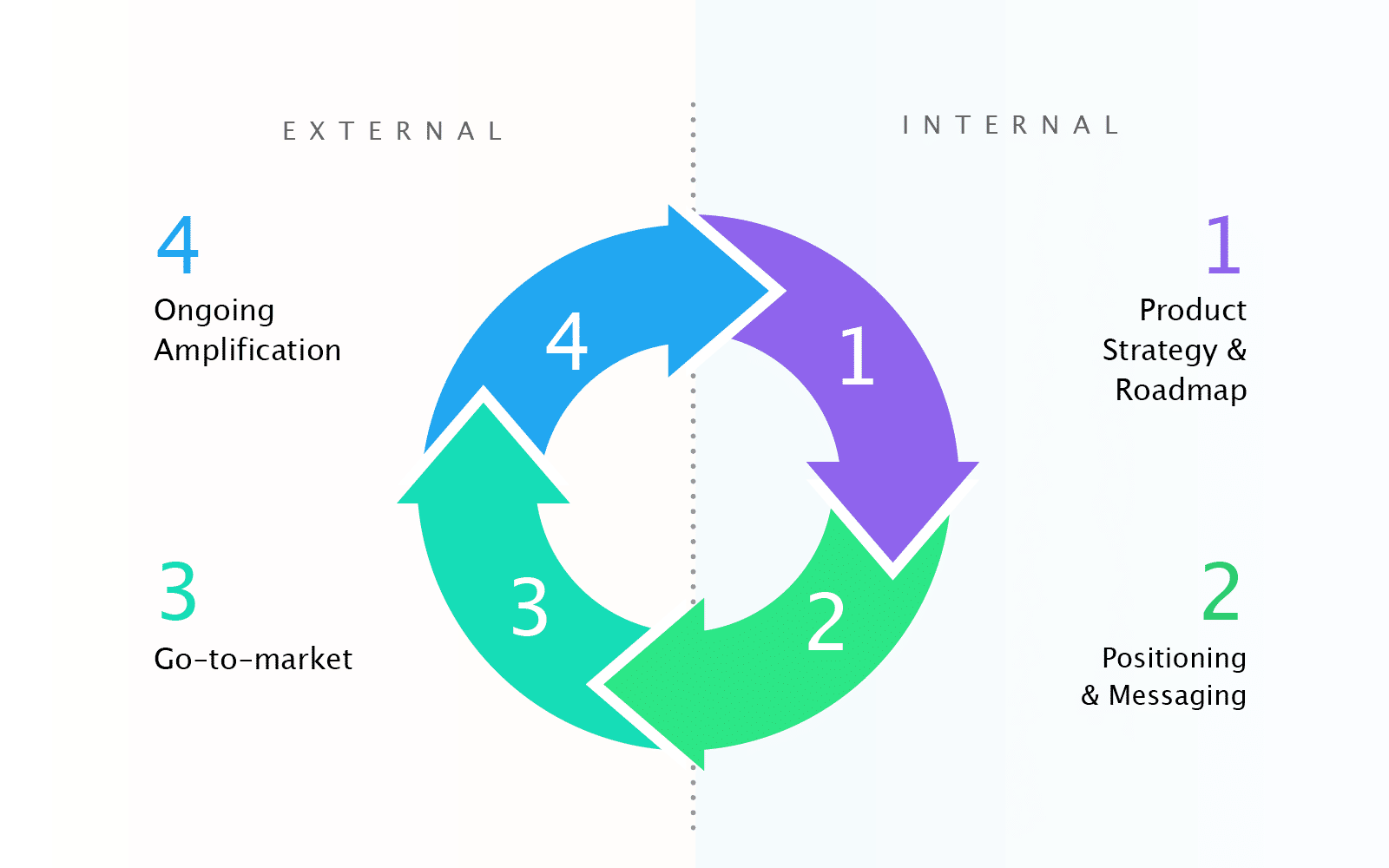Email is a popular way for consumers to communicate with brands, and it is a channel that continues to offer ROI. In reality, marketers gain an average of $42 in return for every $1 invested in email marketing campaigns (HubSpot State of Marketing 2020).
Email is not only not dead, but 78 percent of marketers have witnessed an increase in engagement on this medium in the last year. As we attempt to engage with and deliver value to our prospects and customers, our email marketing campaigns must be effective. We’ll learn more about effective email marketing campaign strategy from the examples in this article.
What is an Email Marketing Campaign?
An email marketing campaign is a series of emails sent by a company to present and potential consumers. They are used to entice clients to do business with the company. Email campaigns are an essential strategy for inbound marketing.
Inbound marketing is a continuous process in which marketers meet buyers at any point in their journey. Keep in mind that not everyone is ready to buy from you right now.
That is why email is such a vital conduit.
You can stay top-of-mind by communicating to their personal inbox via email, and you can do it at scale with marketing automation tools.
How to Plan and Carry Out an Effective Email Marketing Campaign
- Determine your campaign’s goal.
- Put yourself in the buyer persona’s shoes.
- Create a targeted list and set enrollment criteria.
- Determine the time frame for which you want the campaign to run.
- Make a plan for your email series.
- Create attention-grabbing topic lines.
- Make your brand’s assets.
- Incorporate explicit calls to action.
- Always make it possible for them to opt-out.
- Keep an eye on your analytics.
#1. Determine your campaign’s goal.
Determine the desired outcome:
- Is it to clear out your to-do list?
- How about promoting a new product?
- Is there a way to follow up on an abandoned cart event?
- How can you keep your audience’s attention?
Various email marketing campaigns will produce diverse results, necessitating the use of different strategies to achieve them. Once you’ve determined the aim of your campaign, you may set the goals you wish to achieve. Include specific metrics in your goal so that you can measure the success of your campaign based on quantitative facts.
#2. Put yourself in the buyer persona’s shoes.
After you’ve determined the desired outcome and goals, you’ll need to plan how to get your customer persona from point A to point B. Some questions to consider include:
- How did they get started in the first place?
- What is important to them?
- How would this campaign be beneficial?
#3. Create a targeted list and set enrollment criteria.
You’ve decided who you’re going after and what you want them to do. So, the part must then be built from there. What characteristics do your buyer personas all have in common? How do those properties appear in your CRM?
Your software is intelligent, but it isn’t intelligent enough to recognize which recipients you’re sending to. Will the recipients receive the emails at the same time, or must they meet particular requirements before being enrolled in the sequence or campaign?
#4. Determine the time frame for which you want the campaign to run.
You could be conducting a seasonal marketing campaign that just requires one or two emails, or you may be putting together a long-term top-of-mind nurturing campaign. The length of your email sequence should be tailored to the duration of the buying cycle and the point the persona is at in the buyer’s journey. In other words, convey the appropriate message at the appropriate moment.
#5. Make a plan for your emails and follow-ups.
You may desire many touchpoints during the campaign’s timeline. You should also think about follow-ups based on the activities that each receiver performs. Plan out these emails, describing the main message and takeaways for each one.
#6. Create topic lines that will entice people to click.
The subject line serves as the entry point for the rest of your email. Unless your buyer persona clicks the subject line, they will not be exposed to your content. With that in mind, employ this valuable real estate for material that entices them to read on. You can do so by:
- Arousing their curiosity
- Promising worth
- Making a loop (that will be closed in the body of the email)
- To begin the chat, use your distinct voice.
- Make use of personalization
#7. Make your brand’s assets.
Intentional and well-placed imagery can boost click-through rates, so consider not only what you want to say but also how you want to say it, utilizing visuals to support your message.
#8. Incorporate explicit calls to action.
Don’t overwhelm your email contacts with too many alternatives. Each email you send should have a specific action you want the reader to take. Then, in clear, plain language, tell them to perform that action and set expectations for what will happen if they do.
#9. Always make it possible for them to opt out.
People who do not wish to read your emails should not be on your list. Keeping them merely distorts your bounce rate and increases the number of people marketing your emails as spam. Furthermore, in accordance with CAN-SPAM laws, you should always give a method for them to opt out of email if they no longer wish to receive emails from you. This opt-out link is often located in the footer of each email you send.
#10. Keep an eye on your analytics.
Take notes as the email marketing campaign progresses. Are your open and click rates in line with your expectations? What went well against what did not go well? Are you on track to meet your email marketing campaign objectives?
The more you pay attention to the data, the better you’ll be able to learn what works and what doesn’t for your target audience, resulting in more effective email marketing campaigns in the future.
10 Best Effective Email Marketing Campaign Examples
You most likely have an email address if you’re reading this (or two, or three …). In reality, you’ve most likely been sending and receiving emails for years, and you’ve very certainly got some dubious deliveries in your mailbox.
We’re guessing you tossed them in the trash because they were unexpected, uninformative, or had a subject line like tHaT wAs fOrmAtTeD liKe tHiS.
While email has withstood the test of time, many marketers have been slow to alter their campaign marketing strategy since its beginning. So, to guarantee you’re sending modern emails that are worthy of your receivers’ time and attention, we’ve collected a collection of effective email marketing samples to help you with your next campaign strategy.
#1. PayPal
There are a couple of things we like about this PayPal email marketing campaign example. The introductory content is not just witty and concise, but the overall concept reflects a relatable benefit of using the service. Consider this: how many times have you gone out to dinner with friends and then fought over the bill when it came time to pay? PayPal is able to catch the interest of its audience by capitalizing on a widespread pain point.
#2. ModCloth
Great firms are constantly evolving, and your customers expect to see changes. What they don’t anticipate (since far too many businesses have failed to keep their end of the agreement) is to be informed about such changes. Having said that, this email marketing campaign from ModCloth is a welcome change of pace. If you’re going to modify the method you interact with a lead or client, give them plenty of notice so that if they’re not on board, they can make the appropriate changes to keep their inbox clean.
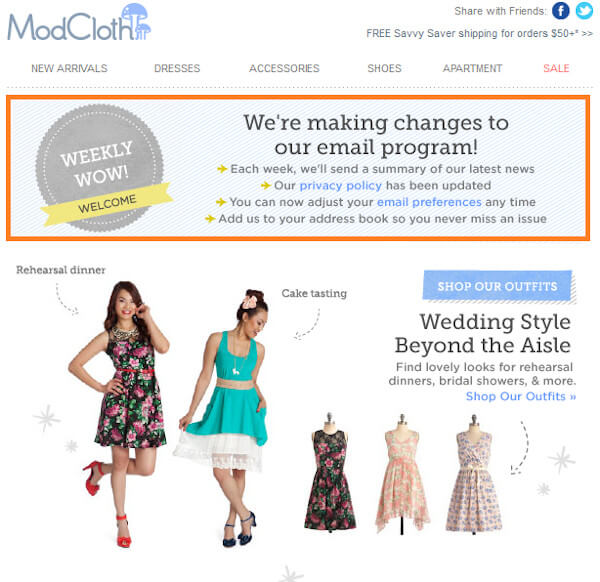
#3. Zipcar
This example comes from a coworker who began signing up for Zipcar, got busy, and had to abandon the form. As a result, the email directs her back to the website with some amusing language that nudges her in the right way while also reminding her of the benefits of using Zipcar: saving money and helping the environment.
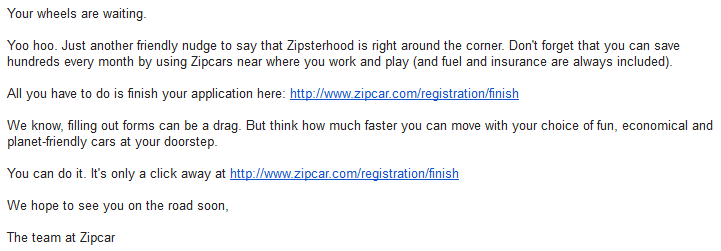
If your site visitors are abandoning shopping carts or landing pages, employ email marketing to remind them that they have unfinished business on your website!
#4. RunKeeper
With this polite, instructive email, RunKeeper attempts to reengage lost users. The content aims to convince recipients to give the app another opportunity by emphasizing the app’s most current upgrades and features. Small additions such as the “Hi friend” greeting and the conclusion “You awesome” make the text feel more welcome and less forceful.
#5. Loft
Loft’s email seeks to showcase their grasp of your chaotic, mixed-value inbox. Loft requests that their subscribers adjust their choices to assist them to create a more personalized experience in order to present you with emails that you actually want to open. This customer-focused email is quite effective at making the receiver feel as though their likes, dislikes, and opinions matter.
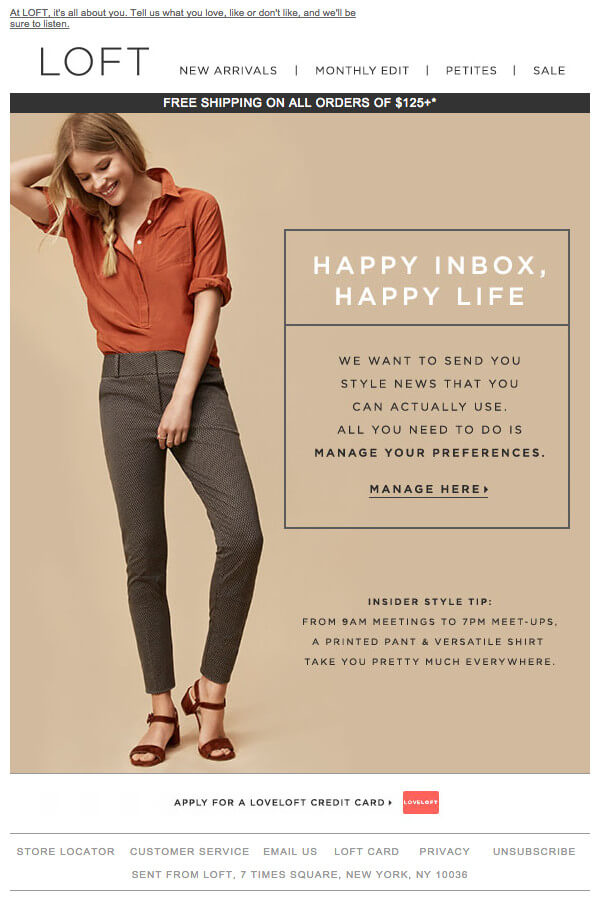
#6. UncommonGoods
You’ve probably heard it a million times (and a few thousand of those times may have come from us): your calls to action should convey a sense of urgency. Isn’t it what motivates a salesperson to take action? UncommonGoods’ email, on the other hand, succeeds in instilling a sense of urgency by emphasizing the importance of responding now.
Rather than urging, “Order your Mother’s Day gift NOW before Preferred Shipping expires!” this email says, “Don’t you think Mom would’ve preferred a faster delivery?” She would, without a doubt. Thank you for reminding me before it’s too late; I don’t want to be in hot water since my gift arrived after Mother’s Day.
#7. JetBlue Airways, Inc.
We’ll admit it: we have a thing for JetBlue’s email marketing campaign. And they keep delivering loved marketing in this cheeky email marketing campaign aimed at delightfully reengaging customers. Every aspect, from the header to the three funny arguments to the actionable, contrasted CTA, works together to produce a charming promotional campaign that isn’t pushy.
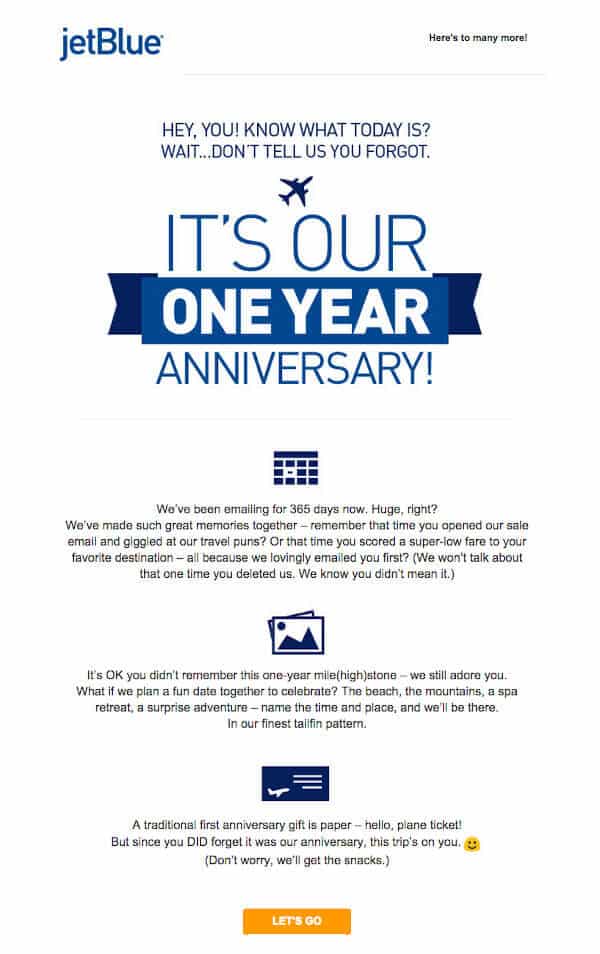
#8. Bonafide
This email is used by HubSpot customer Bonafide in one of its lead nurturing email series, and it’s an excellent example of a principle that many email marketers overlook. Your inbox receivers may or may not remember who you are!
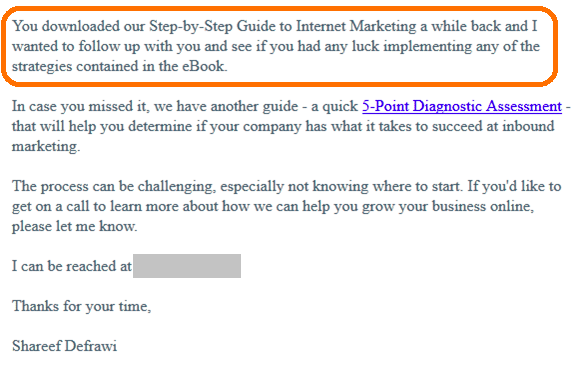
Look at the orange callout — the opening paragraph of this email informs the reader why they are being contacted. With the amount of email overload we all experience, reminders like this one are crucial for preventing deletions and unsubscribes.
#9. Rip Curl
“BE A PART OF THE REVOLUTION.”
Don’t you think that’s rather powerful? Rip Curl, an Australian surfing gear retailer, creates an email headline that blends urgency with our psychological drive to be a part of something to create a title that jumps off the page. This positioning is intended to persuade people that there is a “revolution” going place and that it is their turn to participate. At the end of the day, people want to be a part of something bigger than themselves, and this email encourages them to do so by purchasing this stylish watch.
#10. Harpoon Brewery
My Harpoon colleagues are really considerate, aren’t they? This simple, timely email truly seems like it came from a friend, which is why it is so effective. In this day and age of email automation, it’s easy for email campaigns to feel robotic. And, while I’m sure this email was generated by a computer, it has a very human feel to it.
If you want to deepen your relationship with your current customers, consider sending them a simple email like this to let them know you’re thinking about them.
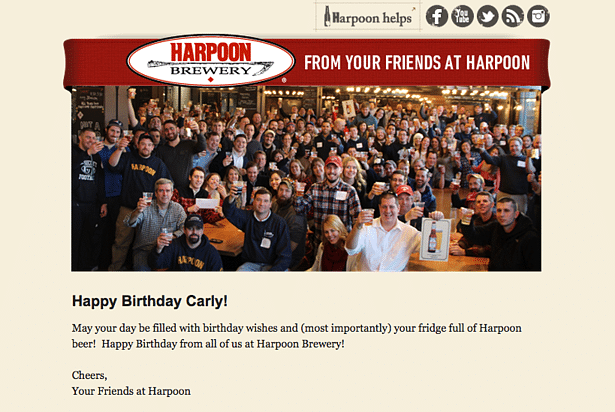
Harpoon Brewery Email Marketing Campaign Example
What is the best time to send an email marketing campaign?
The best time to send an email marketing campaign varies based on the target audience and their habits. However, a general rule of thumb is to send emails during the weekdays, as people are more likely to check their inboxes then. Avoid sending emails on weekends or early mornings and late at night, as these are less likely to be checked.
How can I measure the success of my email marketing campaign?
There are several metrics you can use to measure the success of your email marketing campaign, including open rates, click-through rates, conversion rates, bounce rates, and unsubscribe rates. By analyzing these metrics, you can determine which aspects of your campaign are working well and which need improvement.
How can I personalize my email marketing campaign?
Personalizing your email marketing campaign is key to increasing its success. You can personalize your emails by using the recipient’s name in the subject line or greeting, segmenting your list based on interests and behaviors, and including personalized content and recommendations based on previous interactions with your brand.
How often should I send my email marketing campaign?
The frequency at which you should send your email marketing campaign depends on your target audience and the type of content you are sending. A good rule of thumb is to send one to two emails per week, but you can adjust this based on your specific goals and audience. Make sure not to overwhelm your subscribers with too many emails, as this can lead to unsubscribes.
Can I use images and videos in my email marketing campaign?
Yes, you can use images and videos in your email marketing campaign. However, be mindful of the size and format of your images and videos, as some email clients may block large attachments or have trouble displaying certain formats. Consider using a hybrid approach where you include images and videos as clickable links that lead to a web page where the content can be displayed properly.
What is A/B testing and how can I use it in my email marketing campaign?
A/B testing is a method of comparing two versions of a marketing campaign to determine which one performs better. In the context of email marketing, you can use A/B testing to compare different subject lines, call-to-action buttons, or email layouts to see which one resonates better with your audience. By conducting regular A/B tests, you can continually improve the effectiveness of your email marketing campaign.
Summary
Email marketing campaign strategies clearly come in a variety of shapes and sizes. Create a healthy list, write compelling subject lines, and offer quality material to your recipients’ inboxes, and you’ll be well on your way to meeting your email marketing objectives.
Email Marketing Campaign FAQs
Do email marketing campaigns work?
While it still has its competition, it’s undoubtedly still working. Email marketing has an ROI of 4400%. … Those companies that utilize email and do it well can enjoy higher sales and a more cost-efficient approach to their marketing overall. The main reason why people wonder if email still works is due to its a
What are the 5 Ts of email marketing?
We all know that content marketing can help build your brand, drive customer engagement and increase revenue. But in order to be truly effective, follow the “5 Ts”: Tease, Target, Teach, Test and Track.
What are the 3 types of email marketing?
3 Important Types of Email Marketing
- Email Newsletters. The email newsletter is a one-off communication that can be used to send promotional messages, important account information, product updates, and more. …
- Transactional Emails. …
- Behavioral Emails.
How do I advertise via email?
Here are some pointers on the best way to do e-mail advertising:
- Ask for e-mail addresses — never send unsolicited e-mail. …
- Keep records of all registrations forever. …
- Always offer a chance to opt out. …
- State your privacy policy. …
- Appoint a real, live person to handle problems and inquiries. …
- Keep your list secure.
